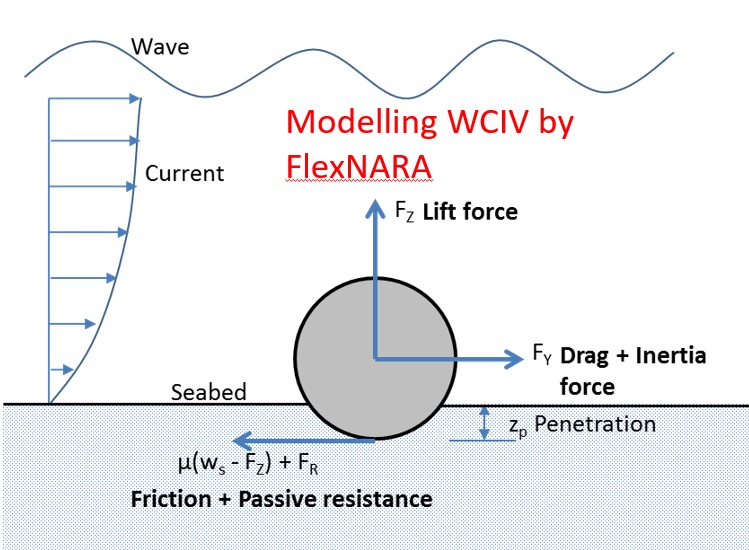A significant number of UK offshore wind farms are encountering several challenges associated with the installation and burial of intra-array power cables. Experiences gained from the offshore wind industry suggest that problems related to cable fatigue and damage make up around 80% of all the insurances claimed. In 2011, the Offshore Wind Accelerator (OWA) research development programme of the Carbon Trust has commissioned a study to develop recommendations for optimising cable installation methodologies that could be applied to large wind farms in the UK Round 3. To reduce the installation cost, it was recommended to develop an innovative cabling design – following the oil & gas industry – involving a free-hanging (J-tubeless) part between the turbine platform and seabed. In addition, during the installation phase, the laid-down parts of the cables might be left unburied for a certain period of time. Based on these conditions, the on-bottom lateral stability with possible interaction with the seabed of the dynamic flexible cables must be thoroughly analysed and understood, by also taking into account the realistic combined wave-current conditions, the potential effects of VIV as well as those from seabed-structure interactions.
In shallow water applications with depths < 200 m as in the offshore wind farms, high-energetic wave and current conditions resulting in the multi-directional oscillatory flows and fluctuating hydrodynamics containing higher multi-harmonics are expected to play a very significant role in the on-bottom stability of subsea cables which in turn depend upon seabed surface, soil and end boundary conditions. FlexNARA is investigating the on-bottom dynamic stability of subsea cables for offshore wind applications, by evaluating the effectiveness and limitation of current design practices, and also by developing new predictive models and analysis tools for combined wave-current-induced vibration (WCIV).

